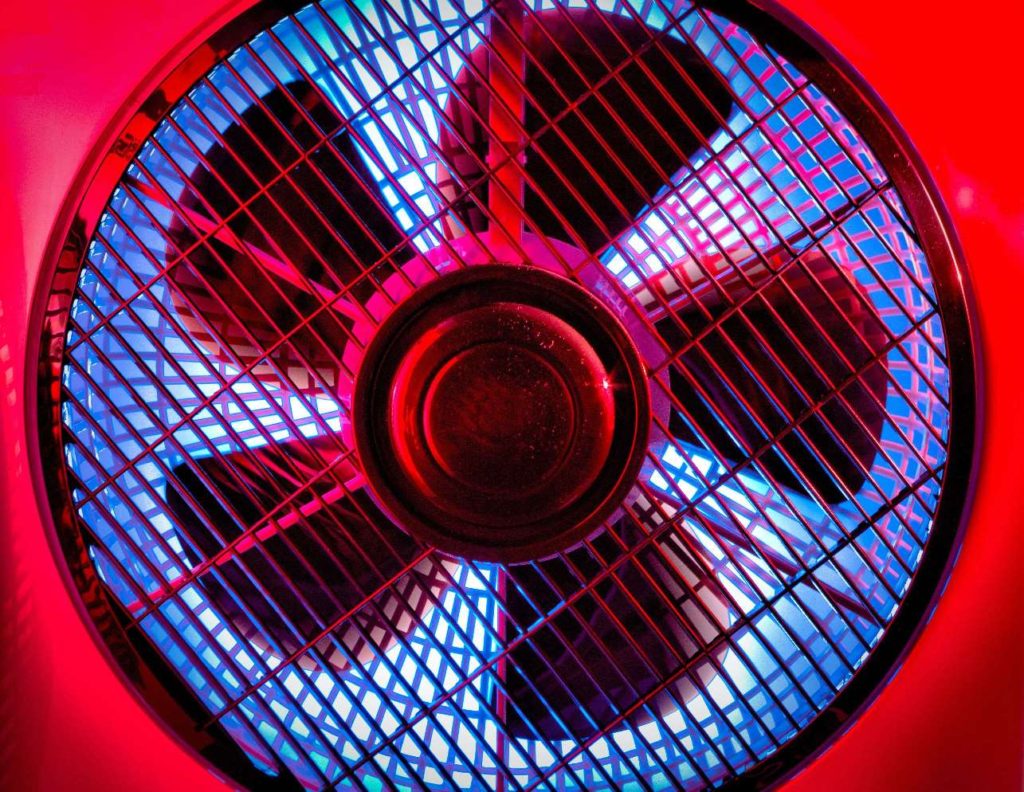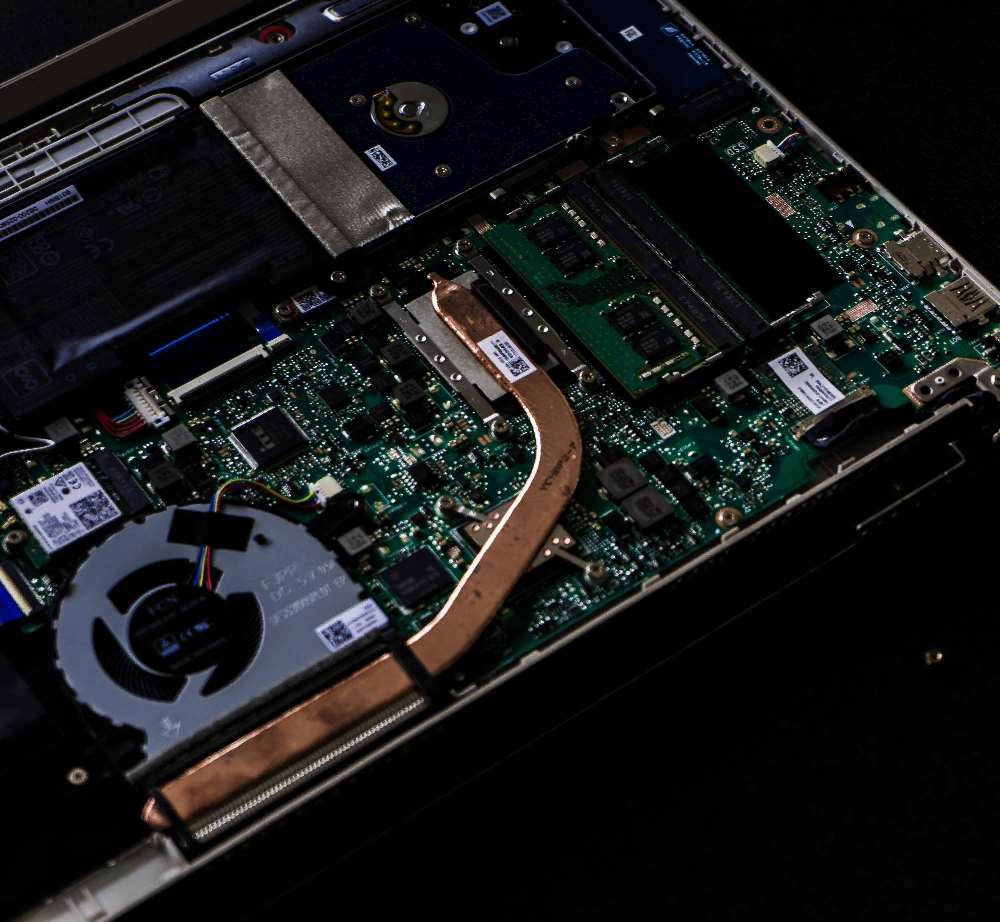Have you ever wondered how your Laptop Fans work? This complete guide will walk you through how the technology works, its relationships with other components of your Laptop, and how you can maintain and get the best out of your Laptop Fans.
Laptop fans work in tandem with your computer cooling system to effectively regulate the heat of your Laptop CPU and GPU. Through the exhaust at the bottom, it pulls air into your computer and pushes it past the heat sink and copper wires, leaching some of the heat and releasing it through the exhaust.
Laptop fans and cooling design differs from manufacturer to manufacturer. In rare cases, some laptops have been reported to have up to three fans and a half-dozen heat pipes, and multiple heat sinks.
How Laptop Fans Work with Heat Fans to Keep Your Laptop Cool
Most desktop computers rely on heatsinks to keep your computer cool by funneling the heat of the processor, GPU, and other sensitive parts of your Laptop. The heat sink is typically made of Aluminum, Copper, or some other alloy and heavily relies on condensation to wick heat. The fan typically takes care of dispersing the heat. On Laptops, the technology is slightly different but the methodology is largely the same.
Instead of using just Heatsinks, Laptop manufacturers use a combination of heatsinks and heat pipes. Heat pipes are metal pipes containing liquid methanol that turns into vapor when heated. Then, it travels down the length of the heat pipes to condense back with the aid of an external fan. Ethanol travels down to the fan with capillary action and defies gravity when necessary to transport the Methanol. The process repeats itself over and over again, and over several cycles, they help slowly leach the heat away from your CPU and GPU and allow your fan to exhaust the heat.
The types of heat pipes in gaming laptops are called vapor chambers or flat head pipes and are desired by laptop manufacturers because of their unique form factor. The dimensions make it easier to cram them into an increasingly thinner chassis. Several well-laid heat pipes are considered routine in most modern laptops and workstations.
How Does Your Laptop Fan Work with your Computer?
Your Laptop fan is central to your system’s cooling system, which means it directly impacts your Laptop’s performance more than any other feature. If it’s faulty or the cooling system was poorly laid out, it can lead to thermal throttling– which is a safeguard that keeps your Laptop from damaging itself from overheating during operation. It will lower the clock speed of your CPU, GPU, and even memory if your Laptop runs hot enough in other to promote cooling.
Your Laptop fan, like most components in your computer, can be controlled through a variety of means. If you don’t find the default fan speed to be adequate enough for your performance needs, you can change it to prevent throttling and even boost the performance of your computer.

How to Control your Laptop Speed
There are a number of ways you can approach artificially controlling your fan speed. Here are three of the most popular and reliable methods.
Changing the Settings in your Computer BIOS
All computers come with a basic BIOS that governs the more important aspects of your device like the battery, storage, batteries, Operating system, and Fan. With the right settings, you can alter how your fan operates and responds to temperate changes.
Every computer is a little different, but they should all be accessible by hitting the appropriate function button during the botting sequence. Google the BIOS function key for your computer if you don’t know it.
It should bring you to a setting page you can navigate through via arrow keys. It will take some search, but you should find the BIOS settings for your computer Fan eventually. Before you get to change the settings, understand that most Laptop fans are programmed to operate with temperate change— meaning when your Laptop internals reach a certain threshold, they should begin to spin and will pick up speed at various temperate intervals.
If you want your PC to run cooler, you might want to program it to start working at a lower temperature, or you could even set it to run all the time (However, you run the risk of wearing out the fan more quickly.
Changing your Laptop Fan Speed with Software (MSI Afterburner, Speed Fan, and Hardware Monitor)
Speed fan
Speed Fan is a free, fan speed control software, and it lets you control your Laptop fan speed without hopping into your Bios. In addition to that, it also has a plethora of other interesting features.
Here’s how to get Speed Fan
- Google Speed Fan to find and download the Speed Fan application and install it on your windows computer.
- You should see a plain page detailing the temperature of your various hardware components, your fan speed, as well as options to turn on and off “Automatic fan speed”
- Automatic Fan speed does exactly as the name suggests– allows your computer to automatically guide and control your fan speed
- For manual adjustment of fan speeds, you’ll have to tweak the percentages of each fan on your PC.
- Go to installed components, you should find a list of apps you’ve installed on your device. Click on the device you want to cool –for example, your CPU– and set up a temperature trigger.
Hardware Monitor and SI Afterburner operate using the same general principles. You have to tweak each to get full control of your fan temperature and computer behavior.
Conclusion
This should cover just about everything you need to know about how your laptop fan works and how you can teak it to increase or reduce your computer performance without any real risks. Laptop cooling systems are one of the many areas of modern computers that remains an open secret to most. Understanding more about it should equip you with the information you need to make better decisions going forward.

